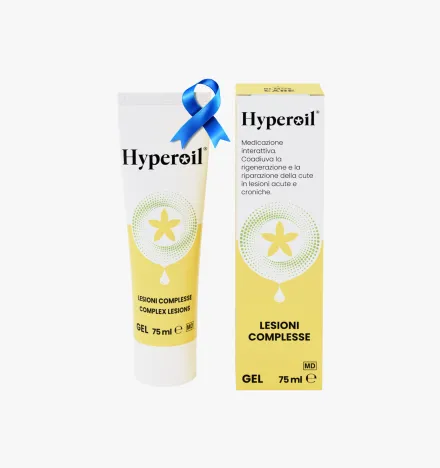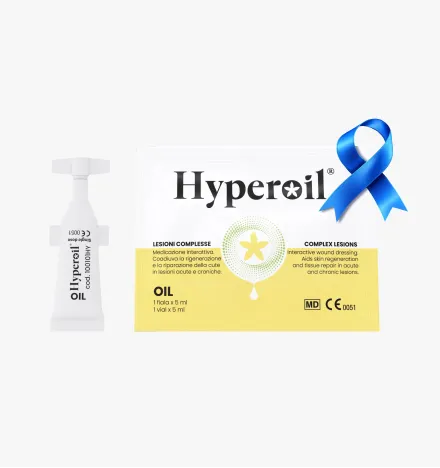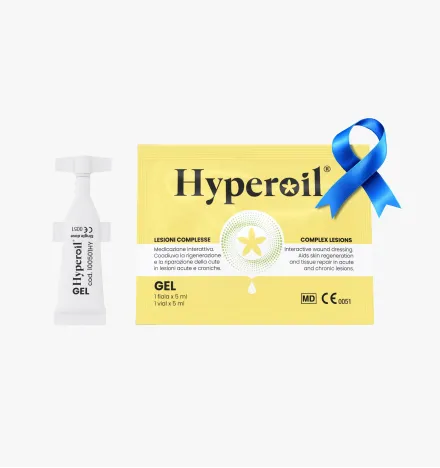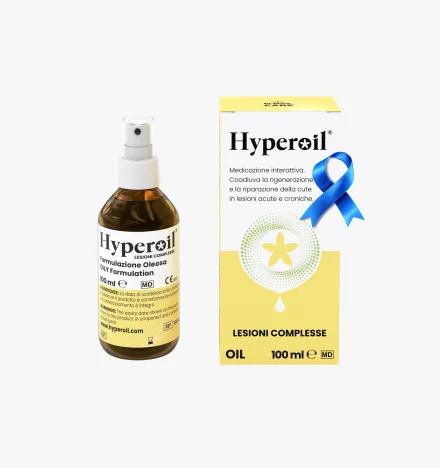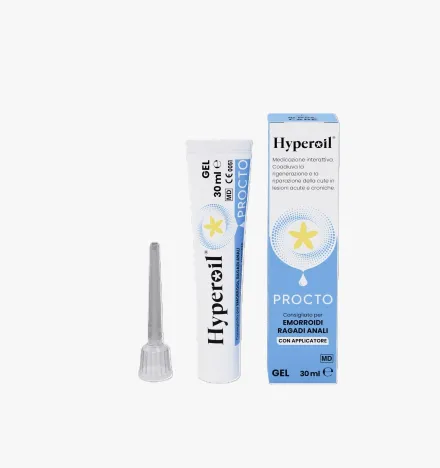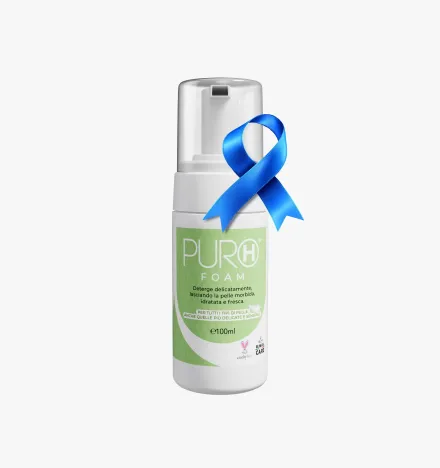Wounds and Injuries of the Skin
Wounds and skin injuries can range from minor grazes to more serious damage, such as extensive lacerations. Understanding their symptoms and treatment options is essential to intervene quickly, minimize damage, and promote effective recovery.
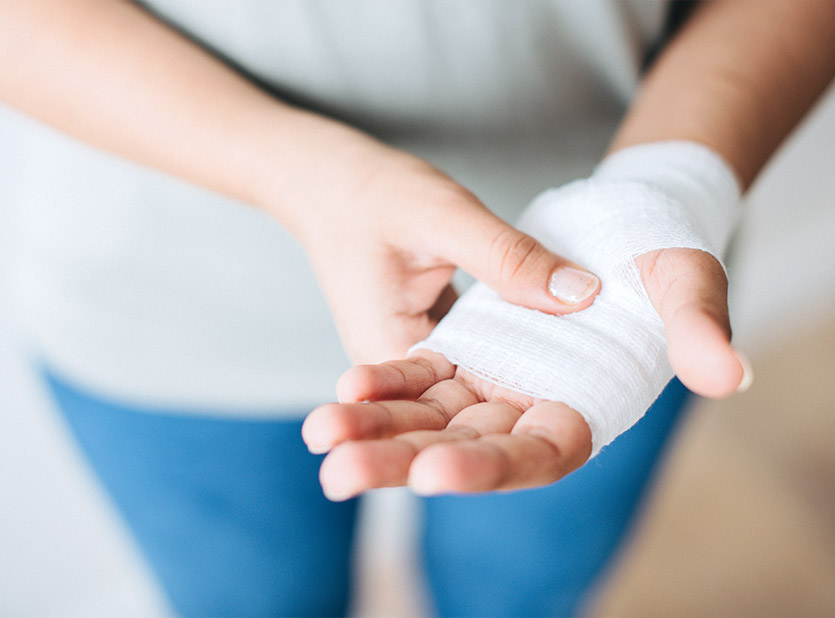
WOUNDS AND SKIN INJURIES: UNDERSTANDING THEM, TREATING THEM, PREVENTING THEM
Skin injuries are common occurrences that can affect people of all ages, including cuts, abrasions, bruises, and even surgical wounds. Their severity varies depending on the cause and the conditions under which they occur. Timely and proper management is essential to reduce pain, prevent infection, and limit possible complications.
Intervening promptly on the first signs of an injury, using appropriate treatments, is the most effective way to promote rapid and complete healing, avoiding more complex interventions.
WHAT IS MEANT BY WOUNDS AND SKIN LESIONS?
Wounds and lesions of the skin refer to all those changes that alter the appearance, structure, or function of the skin. These may manifest as swellings, spots, sores, blisters, or other visible marks, often altering the margins, color, texture, or size of the skin.
Surgical wounds are also included, which are acute planned injuries and usually heal within a defined time, provided no complications occur.
An example of a complication in wound healing is the formation of keloids, thickened scars that form when fibrous tissue grows excessively. They initially appear smooth and red, then become thicker and pinkish in color.
The causes of wounds and skin lesions are many: they can result from localized trauma, such as cuts, abrasions, or burns, or from external conditions, such as sunburn or contact dermatitis. Other times, they may be a sign of underlying diseases, such as autoimmune diseases, infections, diabetes, or genetic disorders.
Although many wounds and injuries are harmless and tend to heal spontaneously, some require specific treatment or medical consultation to prevent complications, such as infection or permanent scarring. Taking care of the skin and intervening early is essential to maintain its health and promote optimal recovery.
Types of wounds and skin lesions
Skin lesions are mainly divided into primary lesions and secondary lesions, depending on when and in what context they occur. Understanding the differences is critical to quickly recognizing the problem, identifying the cause, and choosing the most appropriate treatment, thus reducing the risk of complications.
Primary lesions
Primary (or primitive) lesions represent the first visible change in the skin. They are often the initial manifestation of a skin condition and are usually associated with a specific cause, such as inflammation, infection, or allergic reaction.
Major primary lesions include:
- Erythema: localized redness of the skin due to dilated blood vessels.
- Macules: flat, unremarkable skin spots with a different coloring from the surrounding skin.
- Papules: small, solid, circumscribed bumps often associated with irritation or allergic reactions.
- Nodules: larger and deeper solid formations than papules.
- Pomphi: reddish or whitish skin reliefs, typically caused by urticaria.
- Vesicles: small cavities filled with serous fluid, often caused by dermatitis or viral infections.
- Bubbles: larger, liquid-containing vesicles.
- Pustules: cavities similar to blisters, but filled with pus, as in the case of acne.
Secondary lesions
Secondary injuries develop as an evolution or consequence of a primary injury. They may result from healing processes, infection, or additional trauma to the affected area.
Common examples of secondary injuries include:
- Scabs: formed by the coagulation of fluids such as blood or serum on the surface of the skin.
- Ulcers: loss of skin tissue that can reach the deeper layers of the skin.
- Scars: permanent outcomes of the healing process, with fibrous tissue formation.
- Excoriations: superficial abrasions that result from minor scratches or trauma.
What are the causes of skin wounds and lesions?
Skin wounds and lesions can result from a variety of causes, which can be divided into traumatic, environmental, pathological, and surgical. Added to these are chronic conditions such as pressure sores, which are a specific but common case.
Traumatic causes
Lesions caused by traumatic events include:
- Cuts and lacerations: caused by sharp objects, household or work accidents.
- Abrasions: rubbing that removes the surface layer of skin.
- Burns: caused by heat, chemicals, electricity or radiation.
- Contusions: trauma that ruptures the underlying capillaries without damaging the surface of the skin.
Environmental causes
Lesions caused by external factors include:
- Sunburn: prolonged exposure to UV rays without protection.
- Contact dermatitis: allergic or irritative reactions caused by sensitizing chemicals or materials.
- Insect bites or stings: which can cause local inflammation or infection.
Pathological causes
Skin lesions can be a sign or consequence of systemic diseases or chronic conditions:
- Autoimmune diseases: such as lupus or psoriasis, which cause inflammation or skin ulcers.
- Infections: bacterial (e.g., cellulitis, impetigo), viral (e.g., herpes) or fungal.
- Diabetes: often the cause of chronic ulcers, especially on the feet, requiring complex care to avoid complications.
- Circulatory problems: venous or arterial ulcers result from insufficiencies of the vascular system.
Surgical causes
Surgical wounds represent a specific type of planned skin injury. Although they are intentionally created for medical interventions, they can lead to complications such as infection, abnormal scarring, or keloids. The proper management is critical to promote optimal healing.
SYMPTOMS AND SIGNS
Skin lesions are manifested by visible or noticeable changes in the skin or a portion of it. Common symptoms include changes in the color, texture, and shape of the skin. These changes may be accompanied by sensations of itching, burning or, in some cases, pain.
Depending on the underlying cause-which may include diseases, disorders, or conditions specific to the patient-other symptoms may appear, sometimes involving areas of the body not directly affected by the injury.
The most common associated symptoms include:
- Itching: often caused by dry skin, dermatitis or allergic reactions.
- Swelling: typical of inflammatory or allergic lesions, such as pomphi or erythema.
- Redness: a consequence of irritation, infection or inflammatory processes.
- Increased pain or sensitivity: found in deep injury or infection.
- Presence of fluid or pus: in blisters, boils or pustules, indicative of infection or inflammation.
Skin wounds can also include pressure sores (or pressure ulcers), which form as a result of prolonged compression of the skin against a hard surface. This impedes blood circulation, causing tissue death. The most affected areas are those over bony prominences, such as heels, elbows, sacrum and scapulae. These injuries are common in people who are bedridden or wheelchair-bound for prolonged periods, often following surgery, and require specific management for prevention and treatment.
Complications
If not properly treated, skin lesions can lead to complications affecting both the skin and the body in general:
- Infections: these are among the most common complications and can manifest as swelling of the lymph glands, fever, or purulent discharge in the area of the lesion.
- Allergic reactions: in some cases, especially with insect bites or exposure to allergens, difficulty breathing, dizziness, sweating or nausea may appear.
- Chronic scars and ulcers: untreated or poorly managed lesions can evolve into thickened scars, such as keloids, or ulcerations that are difficult to heal.
Diagnosis
Skin lesions are diagnosed through careful clinical observation by the dermatologist who carefully examines the lesion, assessing its size, shape, color, and location.
When necessary, he may prescribe additional tests to further the diagnosis. Of these, skin biopsy is one of the most common: it involves the removal of a small fragment of skin to be analyzed under a microscope to identify the nature of the lesion. In some cases, blood tests may be required to detect systemic disease or microbiological cultures to confirm the presence of infection.
PREVENTION
Skin lesions prevention relies on a combination of daily behaviors and attention to conditions that can damage the skin. Protecting the skin is essential to reduce the risk of trauma, irritation, or complications from disease or infection.
To minimize the risk of injury, it is important to adopt some simple habits:
- Avoiding prolonged exposure to sunlight without adequate protection helps prevent sunburn and UV damage.
- Using appropriate clothing and footwear can reduce the risk of abrasions or blisters, especially in work situations or sports activities.
- Proper hygiene and the use of gentle products are essential to keep skin healthy and intact, avoiding irritation and dermatitis.
- If there is a predisposition to pressure sores, especially for those who are bedridden or wheelchair-bound, prevention involves frequent changes of position, use of appropriate supports, and maintenance of good skin hygiene.
NATURAL REMEDIES
Natural remedies can be effective in relieving symptoms and promoting healing of minor lesions, such as abrasions, superficial cuts, burns or irritations. Here are some common options:
- Hypericum: known for its healing and antiseptic properties, it is particularly useful for soothing irritation and promoting tissue regeneration.
- Neem: Neem Oil has antibacterial, antifungal and healing properties, ideal for treating minor skin infections or irritated skin.
- Aloe vera: Aloe gel has soothing, moisturizing and healing properties, ideal for mild sunburn and skin irritation.
- Honey: known for its antibacterial and regenerative properties, it is useful on small cuts and abrasions to prevent infection and promote healing.
- Coconut oil: with emollient and antibacterial action, it helps keep skin hydrated and repair tissue.
- Calendula: due to its anti-inflammatory and healing properties, it is indicated for reducing swelling and redness, either as a cream or infused for compresses.
- Colloidal oats: often found in creams or lotions, it helps soothe itchy and irritated skin, reducing inflammation.
These natural remedies can be a good help for superficial skin lesions. However, in cases of deep, infected or persistent lesions, it is always advisable to seek medical attention to avoid complications.
MEDICAL TREATMENTS
The choice of treatment depends on the severity of the lesion, its location, and the presence of any complications.
Generally, it begins with thorough cleansing of the affected area, which is essential to eliminate impurities and reduce bacterial load and create optimal conditions to promote the skin's physiological repair process.
After a thorough examination, the doctor may prescribe specific treatments, including:
- Topical medications: products applied directly to the skin to promote healing or reduce symptoms. These include ointments, creams, lotions, gels, and specific solutions.
- Bath and compress preparations: useful for treating larger areas or relieving irritation.
- Foams and powders: indicated for injuries that need protection or drying, such as wet sores or fungal infections.
In some cases, the physician may combine systemic treatments, such as antibiotics or anti-inflammatories, if the injury is accompanied by more severe infection or inflammation.
INTERACTIVE MEDICINE: NEXT-GENERATION PLANT-BASED TREATMENTS
In recent years, dermatological research has made significant strides in skin treatment. Alongside traditional remedies and medical treatments, new solutions have been developed based on the use of natural active ingredients: this innovative approach, which we can call "interactive medication," aims not only to relieve symptoms but also to promote natural and lasting regeneration of the skin.
Among the therapeutic options available, we recommend products from the Hyperoil® line:
- Hyperoil® Gel Vial 5ml: This gel in a convenient format is ideal for treating small to medium traumatic wounds. Its gel formulation is particularly suitable for hard-to-treat areas, providing essential hydration and protection. Key ingredients such as Neem Oil and Hypericum Flower extract promote tissue regeneration and reduce the risk of infection.
- Hyperoil® Gel Tube 75 ml: perfect for more extensive traumatic or surgical wounds. The consistency of the gel allows it to create a protective environment that facilitates healing of damaged skin. It is also indicated for post-operative use to prevent keloid formation and improve skin elasticity.
- Hyperoil® Oil Vial 5ml: formulated to penetrate into the deepest parts of wounds, it is especially useful for acute phase traumatic wounds. Its oily formulation helps deliver ingredients deeply, accelerating the healing process and keeping the skin hydrated.
These interactive dressings, with their ingredients derived from plants such as Neem and Hypericum, are designed to provide effective and natural treatment, reducing the need for more aggressive medications. They combine the anti-inflammatory, antimicrobial, and regenerative properties needed to effectively treat traumatic and surgical wounds.
GENERAL TREATMENT ADVICE
Wounds and skin lesions, while common, require proper attention to ensure effective healing and prevent complications. To promote healing and prevent complications, it is important to follow the doctor's instructions to the letter, apply prescribed medications (creams, ointments, or lotions) as recommended and as often as recommended, and check the wound regularly for signs of infection, such as redness, swelling, or discharge.
TIPS
- Keep the wound clean: wash the affected area with warm water and mild soap to remove dirt and reduce the risk of infection.
- Protect the wound: apply a sterile dressing to avoid contamination and promote healing. Change the dressing regularly following the doctor's instructions.
- Avoid direct contact: do not touch the wound with dirty hands and do not remove scabs or healing tissue.
- Moisturize the skin: use moisturizing products to keep the skin soft and prevent cracking or excessive dryness around the injury.
- Follow medical directions: apply prescribed medications (creams, ointments, or lotions) according to the recommended methods and frequency.
- Promote circulation: avoid prolonged pressure on the affected area, changing position frequently.
Adopting good daily habits, such as keeping the skin hydrated, using appropriate protection and recognizing early signs of an injury, can make all the difference. In addition, the support of natural remedies or medical treatments, when necessary, allows each situation to be dealt with effectively.
Products to treat Wounds and Skin lesions
Do you have a question?
Our team of experts has an answer for you!
What is the difference between tissue regeneration and repair?
In case of injury, the physiological reflex of the organism and thus of the tissues is to evolve toward a regenerative and/or reparative process.
The difference between these two mechanisms is:
- Regeneration:
damaged tissues are replaced with cells of the same type. - Repair:
damaged tissues are replaced with connective tissue (fibrosis).
Why is the use of topical steroidal anti-inflammatory drugs (cortisone ointments) not recommended to treat an injury?
Steroidal anti-inflammatory drugs cause the scarring process to stop, torpid sores, promoting the development of bacterial and fungal infections.
Why is the use of disinfectants not recommended to treat an injury?
Disinfectants (based on iodine, chlorine, oxygen peroxide, etc.) are known to be histolesive. Used to ward off infection risks, they themselves become detrimental to tissue repair, being very potent inhibitors of cell proliferation, both of fibroblasts and keratinocytes.
The use of disinfectants, depending on the stage of the injury, causes these effects:
- re-initiation of the inflammatory process;
- pathological prolongation of the inflammatory phase;
- failure to progress to the granulation stage;
- stopping the granulation phase;
- inhibition of re-epithelialization;
- scar fibrotization (poor quality scarring).
What are the stages of wound healing?
There are three stages of wound healing:
- Stage 1: exudative or inflammatory or also called cleansing stage
- Stage 2: granulation or proliferative phase (granulation tissue formation)
- Stage 3: epithelialization or regenerative phase (scar formation and epithelialization)
What does "primary dressing" mean?
A primary dressing is one that is placed in direct contact with the injured tissues and interacts with the physiological processes of the injury.
What does "secondary dressing" mean?
A secondary dressing does not interact with the wound, but serves to:
- fill a cavity to absorb excess exudate and maintain the primary dressing over the wound;
- cover a wound to protect it while absorbing excess exudate and maintaining the primary dressing on the wound;
- Fix other secondary dressings and/or the primary dressing on the site of the injury.
Highlights
Choose the beneficial properties of our plant-based products to treat skin lesions and care for your skin.
Subscribe to our newsletter and get 10% off!
Stay up to date with the latest news, promotions, and exclusive offers from RI.MOS. CARE.



